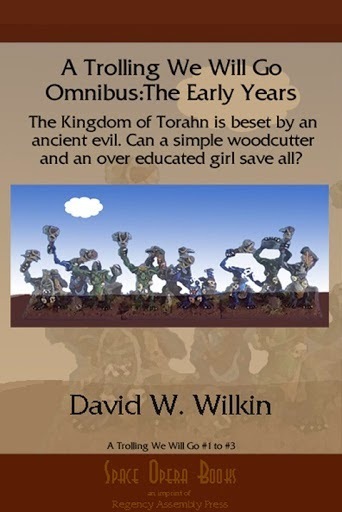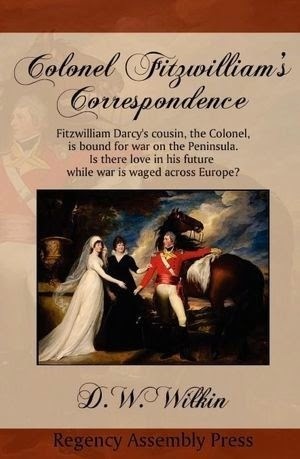D.W. Wilkin's Blog, page 160
January 8, 2015
Regency Personalities Series-Sarah Fane Countess of Westmorland
Regency Personalities Series
In my attempts to provide us with the details of the Regency, today I continue with one of the many period notables.
Sarah Fane Countess of Westmorland
28 August 1764 – 9 November 1793
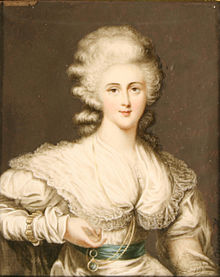
Sarah Anne Child
Sarah Fane Countess of Westmorland was the only child of Robert Child, the owner of Osterley Park and principal shareholder in the banking firm Child & Co. She married John Fane, 10th Earl of Westmorland on 20 May 1782 at Gretna Green after they eloped together. Her parents were dissatisfied with the match, her father wanted her to marry a commoner who would take the Child name (Sarah Anne being an only child), but Sarah Anne told her mother, “A bird in the hand is worth two in the bush.” Her father cut her out of his will, leaving his house and fortune to Sarah Anne’s second son or eldest daughter, instead of the Westmorland heir.
Sarah Anne and the earl’s surviving children were:
John Fane, 11th Earl of Westmorland (1784–1859)
Lady Sarah Sophia Fane (1785–1867), married George Child-Villiers, 5th Earl of Jerseyin 1804 (A Patroness of Amacks).
Lady Augusta Fane (1786–1871), m. 1. John Parker, Lord Boringdon (later 1st Earl of Morley) in 1804, divorced 1809; m. 2 also in 1809 Sir Arthur Paget (1771–1840), son of the 1st Earl of Uxbridge.
Lady Maria Fane (1787–1834), m. 1805 John Ponsonby, Viscount Duncannon, later 4th Earl of Bessborough.
Lady Charlotte Fane (1793–1822)
As only one son survived, most of Child’s fortune eventually went to his eldest granddaughter, Lady Sarah Sophia (The famous Patroness of Almacks).

A Trolling we Will Go Omnibus: The first three Fantasy stories of Humphrey and Gwendolyn
A Trolling We Will Go Omnibus:The Early Years Not only do I write Regency and Romance, but I also have delved into Fantasy.
The Trolling series, (the first three are in print) is the story of a man, Humphrey. We meet him as he has left youth and become a man with a man’s responsibilities.
We follow him in a series of stories that encompass the stages of life. We see him when he starts his family, when he has older sons and the father son dynamic is tested.
We see him when his children begin to marry and have children, and at the end of his life when those he has loved, and those who were his friends proceed him over the threshold into death.
All this while he serves a kingdom troubled by monsters. Troubles that he and his friends will learn to deal with and rectify.
Here are the first three books together as one longer novel.
A Trolling We Will Go, Trolling Down to Old Mah Wee and Trolling’s Pass and Present.
Available in a variety of formats.
For $6.99 you can get this fantasy adventure.
Barnes and Noble for your Nook
The stories of Humphrey and Gwendolyn. Published separately in: A Trolling we Will Go, Trolling Down to Old Mah Wee and Trollings Pass and Present.
These are the tales of how a simple Woodcutter and an overly educated girl help save the kingdom without a king from an ancient evil. Long forgotten is the way to fight the Trolls.
Beasts that breed faster than rabbits it seems, and when they decide to migrate to the lands of humans, their seeming invulnerability spell doom for all in the kingdom of Torahn. Not only Torahn but all the human kingdoms that border the great mountains that divide the continent.
Feedback
If you have any commentary, thoughts, ideas about the book (especially if you buy it, read it and like it ;-) then we would love to hear from you.

January 7, 2015
Regency Personalities Series-William Lyttelton 1st Baron Lyttelton
Regency Personalities Series
In my attempts to provide us with the details of the Regency, today I continue with one of the many period notables.
William Lyttelton 1st Baron Lyttelton
24 December 1724 – 14 September 1808
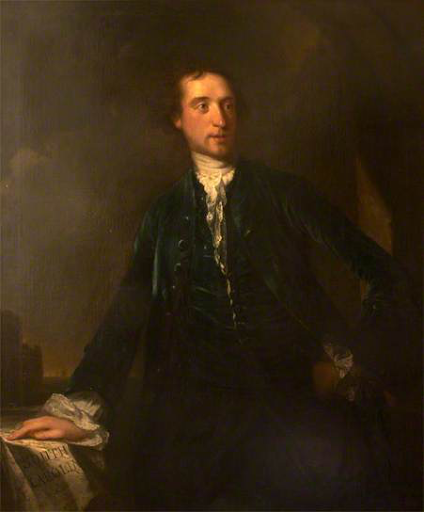
William Lyttelton
William Lyttelton 1st Baron Lyttelton was the youngest son of Sir Thomas Lyttelton, 4th Baronet.
As the youngest son, he did not expect to inherit the family estates and served in various government appointments. He became governor of colonial South Carolina in 1755. As such he was a major factor in the eventual story of America’s independence. His insistence on respecting the treaty rights of native peoples aggravated settlers on the frontier of South Carolina and led to a severe rift between those respecting the King’s directives and those opposed. The opposing factions eventually fought the civil war in South Carolina that was perhaps the key factor in America’s independence. He was appointed Governor of Jamaica in 1760, and envoy-extraordinary to Portugal in 1766. He was raised to the Irish peerage in 1776 as Baron Westcote.
As a result of the death without issue of his nephew Thomas Lyttelton, 2nd Baron Lyttelton in 1779, he inherited the family baronetcy and family estates in Frankley, Halesowen, and Hagley. However, the estates in Upper Arley passed to the late lord’s sister Lucy, wife of Arthur Annesley, 1st Earl of Mountnorris.
The title Baron Lyttelton was revived for Baron Westcote in 1794. He married twice. His first wife was Martha, daughter and coheir of James Macartney of Longford, nephew and coheir of Ambrose Aungier, 2nd Earl of Longford. They had three children including George Fulke, his successor. His second wife was Caroline Bristow, by whom he had two children including William Henry Lyttelton, 3rd Baron Lyttelton.

A Jane Austen Sequel: Colonel Fitzwilliam’s Correspondence
Colonel Fitzwilliam’s Correspondence For your enjoyment, one of the Regency Romances I published.
It is available for sale and I hope that you will take the opportunity to order your copy.
For yourself or as a gift. It is now available in a variety of formats.
For just a few dollars this Regency Romance can be yours for your eReaders or physically in Trade Paperback.
Visit the dedicated Website
Barnes and Noble for your Nook or in Paperback
Amazon for your Kindle or in Trade Paperback
Witnessing his cousin marry for love and not money, as he felt destined to do, Colonel Fitzwilliam refused to himself to be jealous. He did not expect his acquaintance with the Bennet Clan to change that.
Catherine Bennet, often called Kitty, had not given a great deal of thought to how her life might change with her sisters Elizabeth and Jane becoming wed to rich and connected men. Certainly meeting Darcy’s handsome cousin, a Colonel, did not affect her.
But one had to admit that the connections of the Bingleys and Darcys were quite advantageous. All sorts of men desired introductions now that she had such wealthy new brothers.
Kitty knew that Lydia may have thought herself fortunate when she had married Wickham, the first Bennet daughter to wed. Kitty, though, knew that true fortune had come to her. She just wasn’t sure how best to apply herself.
Feedback
If you have any commentary, thoughts, ideas about the book (especially if you buy it, read it and like it ;-) then we would love to hear from you.

January 6, 2015
Regency Personalities Series-James Stuart (East India Company Officer)
Regency Personalities Series
In my attempts to provide us with the details of the Regency, today I continue with one of the many period notables.
James Stuart (East India Company Officer)
died 2 February 1793
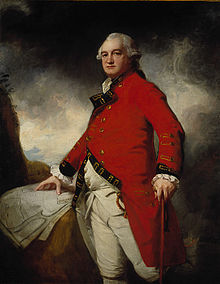
James Stuart
James Stuart was a British Army officer who served in various colonial wars of the 18th century. His service of the British East India Company was marked by his conflict with Lord Pigot, the governor of Madras; Stuart’s arrest of the latter in 1776 resulted in his suspension as commander-in-chief, and he was not vindicated until 1780. He later fought in the Second Anglo-Mysore War, but was suspended from command in 1782 by Lord Macartney, an action that provoked a duel between the two men. Stuart was a younger brother of the lawyer and politician Andrew Stuart.
Stuart was appointed captain in the 56th Regiment of Foot on 1 November 1755. He first saw active service at the siege of Louisbourg (present-day Nova Scotia) under Lord Amherst in 1758. On 9 May of the same year he was promoted to the rank of major, and in 1761 was present with Colonel Morgan’s regiment at the reduction of Belle Île. During the course of the expedition he acted as quartermaster-general, and in consequence obtained the rank of lieutenant-colonel.
From Belle Île he went to the West Indies, and served in the expedition against Martinique, which was captured in February 1762, and on the death of Colonel Morgan took command of the regiment. After the conquest of Martinique his regiment was ordered to join the expedition against Havana, where he greatly distinguished himself by his conduct in the assault of the castle of Morro, the capture of which determined the success of the expedition.
In 1775 he received permission to enter the service of the East India Company as second in command on the Coromandel Coast, with the rank of colonel. On his arrival he found serious differences existing between the council of the Madras Presidency and the governor, Lord Pigot, and on 23 August 1776 he arrested the governor at Madras, at the command of the majority of the council. On this news reaching England, Stuart was suspended by the directors from the office of commander-in-chief of the Madras Army, to which he had succeeded, with the rank of brigadier-general, on the death of Sir Robert Fletcher in December 1776.
Although he repeatedly demanded a trial, he could not, despite peremptory orders from England, succeed in obtaining a court-martial until December 1780, when he was honourably acquitted, and by order of the directors received the arrears of his pay from the time of his suspension.
On 11 January 1781 he was restored to the chief command in Madras by order of the governor and council. He returned to Madras in 1781, and, under Sir Eyre Coote, took part in the battle of Porto Novo on 1 July, and distinguished himself by his able handling of the second line of the British force. In the Battle of Pollilur, on 27 August, he had his leg carried away by a cannon shot. On 19 October he was promoted to the rank of major-general, and on the return of Sir Eyre Coote to Bengal he took command of the forces in Madras. Lord Macartney, the governor, however, would not allow him that freedom of action which Eyre Coote had enjoyed, and on the death of Hyder Ali on 7 December he urged him immediately to attack the Mysore army. Stuart declared his forces were not ready, and made no active movement for two months.
While besieging Cuddalore he was suspended from the command by the Madras government. He was placed in strict confinement in Madras, and sent home to England. On 8 June 1786, though unable to stand without support owing to his wounds, he fought a duel with Lord Macartney in Hyde Park, and severely wounded him. On 8 February 1792 he was appointed colonel of the 31st Foot.
He died on 2 February 1793. His portrait, painted by George Romney, was engraved by Hodges. He married Lady Margaret Hume, daughter of Hugh Hume-Campbell, 3rd Earl of Marchmont, but had no children.

Space Opera Books presents ECO Agents:Save The Planet a Young Adult Adventure
First ECO Agents book available
Those who follow me for a long time know that I also write in other fields aside from Regency Romance and the historical novels I do.
A few months ago, before the end of last year and after 2011 NaNoWriMo, (where I wrote the first draft of another Regency) I started work on a project with my younger brother Douglas (All three of my brothers are younger brothers.)
The premise, as he is now an educator but once was a full on scientist at the NHI and FBI (Very cloak and dagger chemistry.) was that with the world having become green, and more green aware every week, why not have a group of prodigies, studying at a higher learning educational facility tackle the ills that have now begun to beset the world.
So it is now released. We are trickling it out to the major online channels and through Amazon it will be available in trade paperback. Available at Amazon for your Kindle, or your Kindle apps and other online bookstores. For $5.99 you can get this collaboration between the brothers Wilkin. Or get it for every teenager you know who has access to a Kindle or other eReader.
Barnes and Noble for your Nook Smashwords iBookstore for your Apple iDevices Amazon for your Kindle
Five young people are all that stands between a better world and corporate destruction. Parker, Priya, JCubed, Guillermo and Jennifer are not just your average high school students. They are ECOAgents, trusted the world over with protecting the planet.
Our Earth is in trouble. Humanity has damaged our home. Billionaire scientist turned educator, Dr. Daniel Phillips-Lee, is using his vast resources to reverse this situation. Zedadiah Carter, leader of the Earth’s most powerful company, is only getting richer, harvesting resources, with the aid of not so trustworthy employees.
When the company threatens part of the world’s water supply, covering up their involvement is business as usual. The Ecological Conservation Organization’s Academy of Higher Learning and Scientific Achievement, or simply the ECO Academy, high in the hills of Malibu, California overlooking the Pacific Ocean, is the envy of educational institutions worldwide.
The teenage students of the ECO Academy, among the best and brightest the planet has to offer, have decided they cannot just watch the world self-destruct. They will meet this challenge head on as they begin to heal the planet.
Feedback
If you have any commentary, thoughts, ideas about the book (especially if you buy it, read it and like it ;-) then we would love to hear from you.

January 5, 2015
Regency Personalities Series-Edward Blore
Regency Personalities Series
In my attempts to provide us with the details of the Regency, today I continue with one of the many period notables.
Edward Blore
13 September 1787 – 4 September 1879
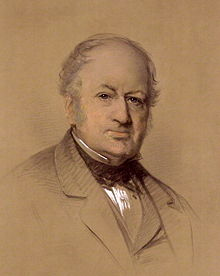
Edward Blore
Edward Blore was born in Derby, the son of the antiquarian writer Thomas Blore.
Blore’s background was in antiquarian draughtsmanship rather than architecture, in which he had no formal training. Blore had been apprenticed to an engraver. He illustrated his father’s History of Rutland, and over the next few years he made the drawings of York and Peterborough for John Britton’s English Cathedrals, and drew architectural subjects for various county histories. In around 1822 Blore supplied the illustrations to Thomas Frognall Dibdin’s Aedes Althorpianæ. In 1823 he toured Northern England, making drawings for a work called the Monumental Remains of Noble and Eminent Persons. It was issued in parts with text by the Rev. Philip Bliss, and completed in 1826. Blore engraved many of the plates himself.
In 1826, he was appointed surveyor to Westminster Abbey. In 1827 he was engaged to furnish plans for the chancel fittings of Peterborough. Shortly afterwards he was employed to restore Lambeth Palace, then in a state of near ruin. His work there included the construction of a fire-proof room for the preservation of manuscripts and archives.
Eastlake praised Blore’s careful detail in his work at Westminster Abbey, adding “this was, in short, his great forte. He had studied and drawn detail so long and zealously that its design came quite naturally to him, and in this respect he was incomparably superior to his contemporaries.”.
Blore is most notable for his completion of John Nash’s design of Buckingham Palace, following Nash’s dismissal. He completed the palace in a style similar to but plainer than that intended by Nash. In 1847, Blore returned to the palace and designed the great facade facing The Mall thus enclosing the central quadrangle. He also worked St James’ Palace in London, and a large number of other designs in both England and Scotland, including restoring Salisbury Tower at Windsor Castle.
Blore was a personal friend of Sir Walter Scott, having been introduced by Daniel Terry, and like Scott was interested in the baronial architecture of Scottish castles. This led to Prince Vorontsov’s suggestion to design his extensive Vorontsov’s Palace in Alupka, Crimea (now Ukraine). The Alupka palace was built between 1828 and 1846, in a mixture of styles ranging from Gothic Revival to Moorish Revival. The palace’s guidebook describes the building as “Blore’s tribute to Muslim architecture”. The structure features two facades, contrasting “the starkness of Scottish Baronial on its landward side with Arabian fantasy facing the sea”.
As a recognised establishment architect, Blore was involved in many projects related to the British Empire; this included Government House in Sydney, Australia, which he designed in 1834 in the form of a Gothic castle. Such designs were unusual and display a more adventurous side to Blore’s work than can be seen from his work in London. His East front, the public face, of Buckingham Palace was criticised from the moment of its completion as banal street architecture, a view shared by King George V who had the facade redesigned in 1913. He was elected Fellow of the Royal Society in 1841.
Blore died in London on 4 September 1879, and was buried in Highgate Cemetery (West), Highgate, London.
The architects Philip Charles Hardwick and Frederick Marrable and Henry Clutton were his pupils. William Mason worked for him before going to Australia and New Zealand.
Buildings
Warminster Town Hall 1832
Bedford Modern School (1834–1974, now the Harpur Centre facade)
Buckingham Palace
Cambridge University Press Pitt Building
Crewe Hall (alterations and estate buildings)
Crom Castle, County Fermanagh, Ulster, Ireland
Goodrich Court
Lambeth Palace (restoration)
St. James’s Palace (alterations)
Vorontsov’s Palace
Westminster Abbey Choir and Screen
Great Moreton Hall, Congleton, Cheshire (built 1841-3)
Kingston Hall, Nottinghamshire 1842 – 1846

Space Opera Books Presents A Trolling We Will Go Omnibus:The Latter Years
A Trolling We Will Go Omnibus:The Latter Years
Not only do I write Regency and Romance, but I also have delved into Fantasy.
The Trolling series, is the story of a man, Humphrey. We meet him as he has left youth and become a man with a man’s responsibilities. He is a woodcutter for a small village. It is a living, but it is not necessarily a great living. It does give him strength, muscles.
We follow him in a series of stories that encompass the stages of life. We see him when he starts his family, when he has older sons and the father son dynamic is tested.
We see him when his children begin to marry and have children, and at the end of his life when those he has loved, and those who were his friends proceed him over the threshold into death.
All this while he serves a kingdom troubled by monsters. Troubles that he and his friends will learn to deal with and rectify.
Here are the last two books together as one longer novel.
Trolling, Trolling, Trolling Fly Hides! and We’ll All Go a Trolling.
Available in a variety of formats.
For $5.99 you can get this fantasy adventure.
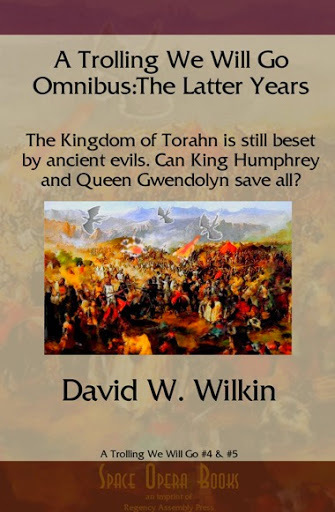
Barnes and Noble for your Nook
The stories of Humphrey and Gwendolyn. Published separately in: Trolling, Trolling, Trolling Fly Hides! and We’ll All Go a Trolling. These are the tales of how a simple Woodcutter who became a king and an overly educated girl who became his queen helped save the kingdom of Torahn from an ancient evil. Now with the aid of their children and their grandchildren.
Long forgotten is the way to fight the Trolls. Beasts that breed faster than rabbits it seems, and when they decide to migrate to the lands of humans, their seeming invulnerability spell doom for all in the kingdom of Torahn. Not only Torahn but all the human kingdoms that border the great mountains that divide the continent.
The Kingdom of Torahn has settled down to peace, but the many years of war to acheive that peace has seen to changes in the nearby Teantellen Mountains. Always when you think the Trolls have also sought peace, you are fooled for now, forced by Dragons at the highest peaks, the Trolls are marching again.
Now Humphrey is old, too old to lead and must pass these cares to his sons. Will they be as able as he always has been. He can advise, but he does not have the strength he used to have. Nor does Gwendolyn back in the Capital. Here are tales of how leaders we know and are familiar with must learn to trust the next generation to come.
Feedback
If you have any commentary, thoughts, ideas about the book (especially if you buy it, read it and like it ;-) then we would love to hear from you.

January 3, 2015
Regency Personalities Series-Princess Maria Theresia of Thurn and Taxis wife of the Austrian Ambassador
Regency Personalities Series
In my attempts to provide us with the details of the Regency, today I continue with one of the many period notables.
Princess Maria Theresia of Thurn and Taxis wife of the Austrian Ambassador
6 July 1794 – 18 August 1874
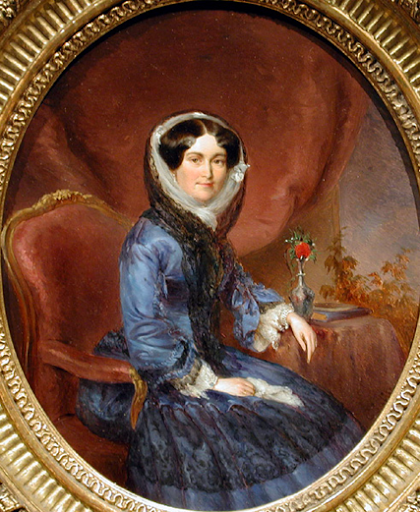
Maria Theresia
Princess Maria Theresia of Thurn and Taxis wife of the Austrian Ambassador was a member of the House of Thurn and Taxis and a Princess of Thurn and Taxis by birth and a member of the House of Esterházy and Princess Esterházy of Galántha from 25 November 1833 to 21 May 1866 through her marriage to Paul III Anthony, 8th Prince Esterházy of Galántha.
Maria Theresia was the third child and second daughter of Karl Alexander, 5th Prince of Thurn and Taxis and his wife Duchess Therese of Mecklenburg-Strelitz. She was an elder sister of Maximilian Karl, 6th Prince of Thurn and Taxis.
Maria Theresia married Prince Paul Anthony Esterházy of Galántha, eldest child and son of Nicholas II, 7th Prince Esterházy of Galántha and his wife Princess Maria Josepha of Liechtenstein, on 18 June 1812 in Regensburg, Kingdom of Bavaria. Maria Theresia and Paul Anthony had three children:
Princess Maria Theresia Esterházy of Galántha (27 May 1813 – 14 May 1894)
Princess Theresia Rosa Esterházy of Galántha (12 July 1815 – 28 February 1894)
Nicholas III, 9th Prince Esterházy of Galántha (25 June 1817 – 28 January 1894)
Esterházy was a popular diplomat and Maria Theresia became admired by his contemporaries, especially during the Congress of Vienna. In 1815 her husband was appointed ambassador to Great Britain and she became a Patroness of Almacks.

January 2, 2015
Regency Personalities Series-John Murray 4th Duke of Atholl
Regency Personalities Series
In my attempts to provide us with the details of the Regency, today I continue with one of the many period notables.
John Murray 4th Duke of Atholl
30 June 1755 – 29 September 1830
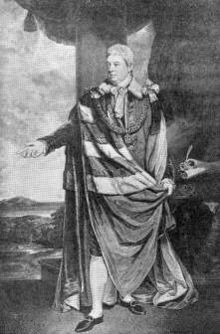
John Murray
John Murray 4th Duke of Atholl was the eldest son of John Murray, 3rd Duke of Atholl and his wife, Charlotte, 8th Baroness Strange, daughter of James Murray, 2nd Duke of Atholl. Lord George Murray and Lord Charles Murray-Aynsley were his younger brothers. He became known by the courtesy title Marquess of Tullibardine when his father succeeded to the dukedom in 1764.
Murray succeeded his father as fourth Duke of Atholl in 1774 and was elected a Scottish Representative Peer. In 1786 he was created Baron Murray, of Stanley in the County of Gloucester, and Earl Strange in the Peerage of Great Britain, which gave him an automatic seat in the House of Lords. He later served as Lord-Lieutenant of Perthshire from 1794 to 1830 and was sworn of the Privy Council in 1797. In 1800 he was made a Knight of the Thistle. He succeeded his mother in the barony of Strange in 1805. He was also Grand Master of the Antient Grand Lodge of England from 1775 until 1781 and again from 1791 until 1812.
Atholl married the Honourable Jane Cathcart, daughter of Charles Cathcart, 9th Lord Cathcart, on 26 December 1774. They had three children:
John Murray, 5th Duke of Atholl (1778–1846)
Lady Amelia Sophia Murray (5 July 1780 – 19 June 1849). She married James Drummond, Viscount of Strathallan, and had nine children.
James Murray, 1st Baron Glenlyon (1782–1837)
After his first wife’s death in 1790 he married Marjory, daughter of James Forbes, 16th Lord Forbes and Catherine Innes and widow of John Mackenzie, Lord MacLeod, on 11 March 1794. They had two children who both died young. Atholl died in September 1830, aged 75, and was succeeded by his eldest son, John. The Duchess of Atholl died in October 1842, aged 81.


